From Maths to Cuts: Why are transferable skills important in fashion



The hidden fact - by Chengyuan Wang
Chengyuan Wang’s path to fashion is far from ordinary. Before sketching a garment, Wang used to write and solve complex equations. Also known as Simonetta Wang, this skilled designer’s unusual academic journey started with a degree in Mathematics and Statistics and a Master’s Degree in Innovation and Entrepreneurship, followed by three years of experience in the Chinese fashion industry. But a Master’s Degree in Womenswear Fashion Design at Istituto Marangoni London was Wang’s natural gateway to fashion design.
Presenting the portfolio collection The Hidden Fact with the i^4 capsule collection, Chengyuan Wang combined different skills while studying how to address consumer preferences for complex orders by applying mathematical formulas to garment surfaces to create intricate textures.
Want to know more about the up-and-coming designer who came to fashion from a completely different background in mathematics? We caught up with Istituto Marangoni alumnus Chengyuan Wang to pick up this talent’s brain on everything from numbers and documentaries about the experience of growing up in wealthy families to South African sculpture artists, AI drawings and Salvador Dalí’s surrealism. We have found that while all of Wang’s references intertwine fashion and maths, their primary focus is on the importance of being understood.
What is the meaning behind your portfolio logo?
I intended to capture a photograph from the microscope’s eyepiece on the upper end. Then I used Photoshop to add one eye at the viewing end of the microscope. This represents our desire to be carefully seen and understood instead of others looking at us from a distance and only picking up the halo of our family.
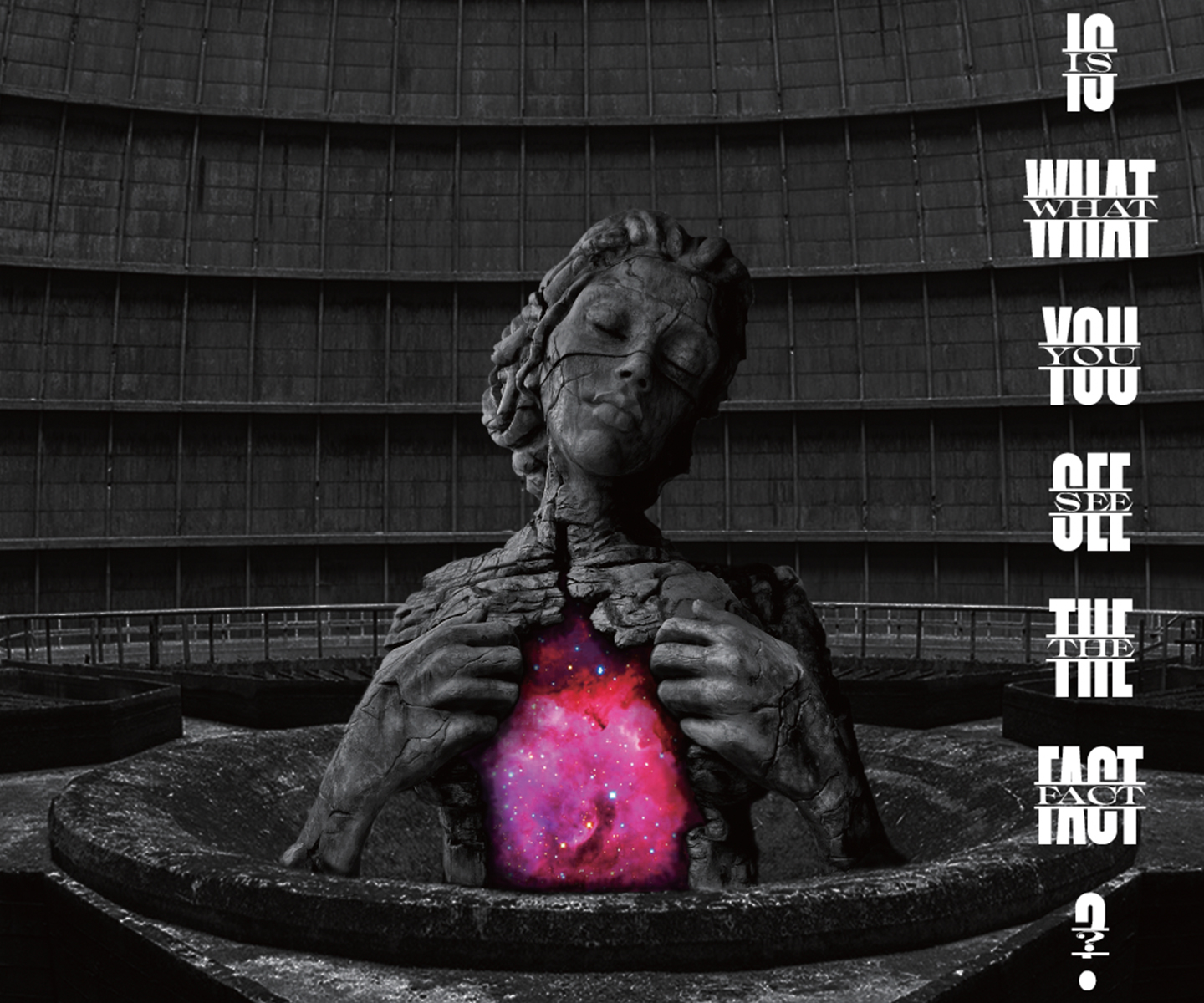
The hidden fact - by Chengyuan Wang
Your portfolio opens with the question “Is what you see most?” written on an artwork. What does this mean in your mind?
This is a sculpture by South African sculpture artist Daniel Popper. The universe-like images inside the chest are actually just pictures I generated automatically with Photoshop, just with different gold and pink colours. The universe contains countless things, just like a person with countless features. Pink and gold reflect abstract elements the respondents discovered after getting to know me. When these two pictures are combined, they show the desire to be seen for who they are instead of which big family they belong to. The background is an abandoned factory to highlight the part that looks like the universe; I created the background with Photoshop using a colour similar to the sculpture’s.

The hidden fact - by Chengyuan Wang
You wrote down some disruptive questions: “Does being born into a rich family limit personal achievements? Is what you see the real me? Is what we see through our eyes the truth?” What did these dilemmas represent for your research?
At the time, I watched a documentary called Born Rich. It interviewed some children who were born into very wealthy families. The director is James Wittenborn Johnson, an American heir, filmmaker, and socialite – a great-grandson of Robert Wood Johnson I, co-founder of Johnson & Johnson. I felt that both the director and the children interviewed strongly desired to have their hard work recognised, but their families seemed to overshadow their achievements with their glamorous aura. Maybe all they want is to be introduced with their name and the job they do instead of being identified as someone’s child. That’s why I named my portfolio The Hidden Fact, and I created different folds to hide parts of the fabric that should be visible on the garment’s surface.
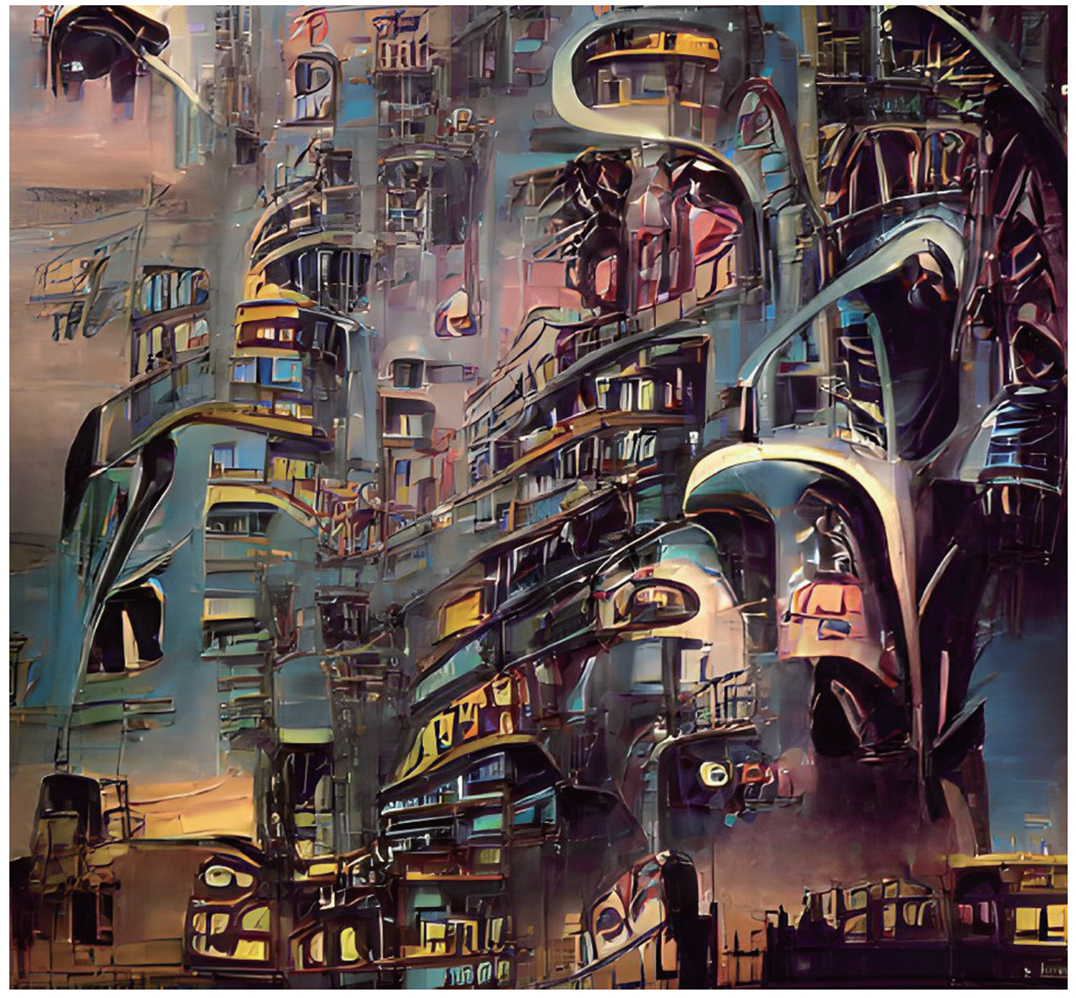
The hidden fact - by Chengyuan Wang
The narrative board page features another graphic. How can this be interpreted?
It is just an AI-generated drawing used to deceive the viewer. I hope someone understands it is not a genuine piece from Salvador Dalí’s body of work. To achieve this, I had to study Salvador Dali in depth. And I believe you must be familiar enough with the artist’s work to realise that this is definitely not part of his œuvre. It is like doing extensive research on a powerful family and discovering that one of its members achieved success independently, regardless of this family.

The hidden fact - by Chengyuan Wang
How can I know what others think of me? – In this part of your portfolio research, you launched a questionnaire asking friends to describe you through colours. How is this part of the making of your collection?
I simply asked them to use a graphic and a colour to describe the first time they met me and how they currently see me.
The hidden fact - by Chengyuan Wang
The fact that you have taken your colour palette from an artwork shows your artistic focus, doesn’t it?
This is a surrealist work by Salvador Dali from 1939. From a distance, it just looks like a skull, but you can see a dancer when you get up close. I hope people observe me as closely as they observe this painting. I slightly changed the colour of the flower on the dancer’s head and added a gold tooth so that the resulting image could contain all the colours I used.
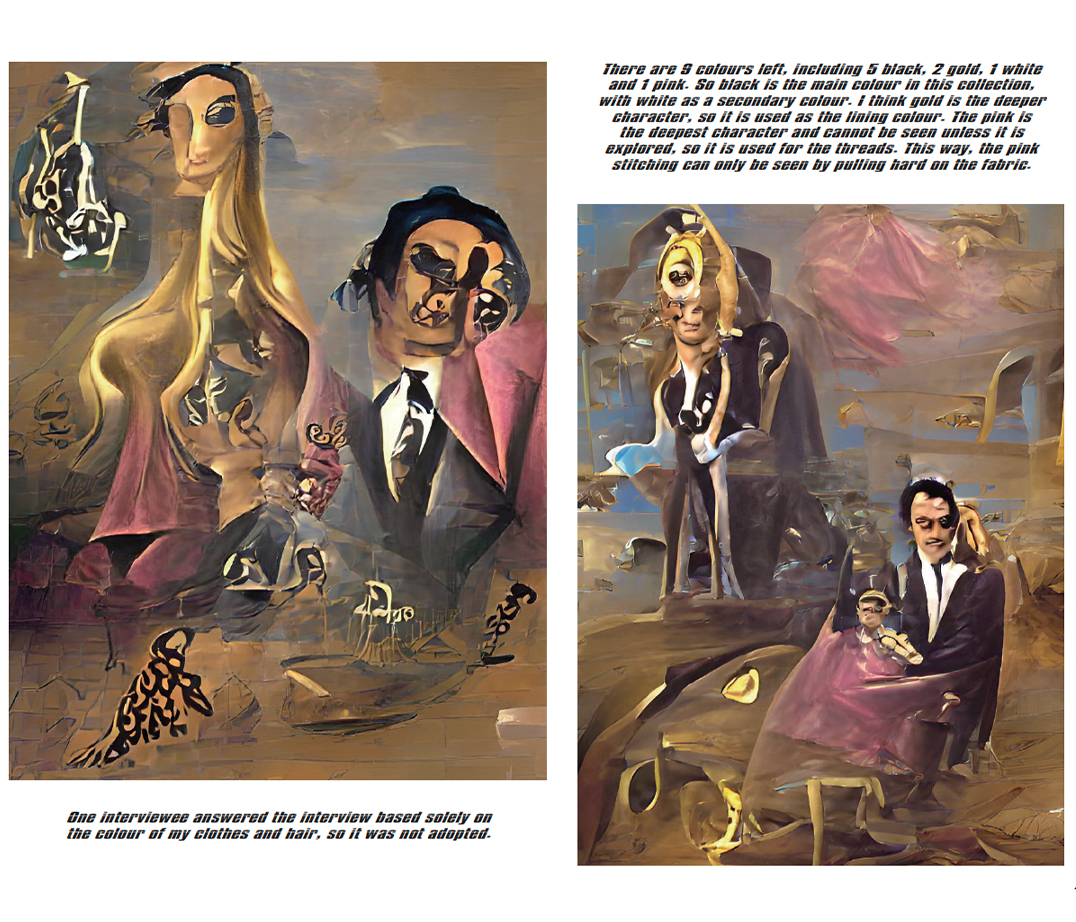
The hidden fact – by Chengyuan Wang
What was the result?
People described me by mentioning different colours: five votes for black, two for gold, one for white and one for pink. Black is, therefore, the main colour of this collection, while white is the secondary colour. I believe gold represents a deeper aspect of my personality, so I used it as the lining colour. Pink represents the deepest part of my inner character that cannot be perceived unless explored in depth, so I used this colour for the threads. This way, pink is only revealed when you pull the fabric tightly.

The hidden fact – by Chengyuan Wang
How has this been part of the making of your collection?
The colour of when they first met me must be the outer colour of the garments, while the other colours represent the inner colours they discovered after knowing the real me. As for the geometric shapes, I wrote a Python (general-purpose programming language) with the help of ChatGPT. It allowed me to create a feature image and randomly change its size, rotation and position on the canvas while generating patterns. Then I eliminated patterns that looked too discreet. I selected the most appropriate image and went through several processing steps to generate the final outline.

The hidden fact - by Chengyuan Wang
What is your favourite look from the capsule collection?
It’s hard to decide. It’s like having many children: I can’t be entirely fair-minded with them, but I should be. So, I give them the same affection and amount of time.
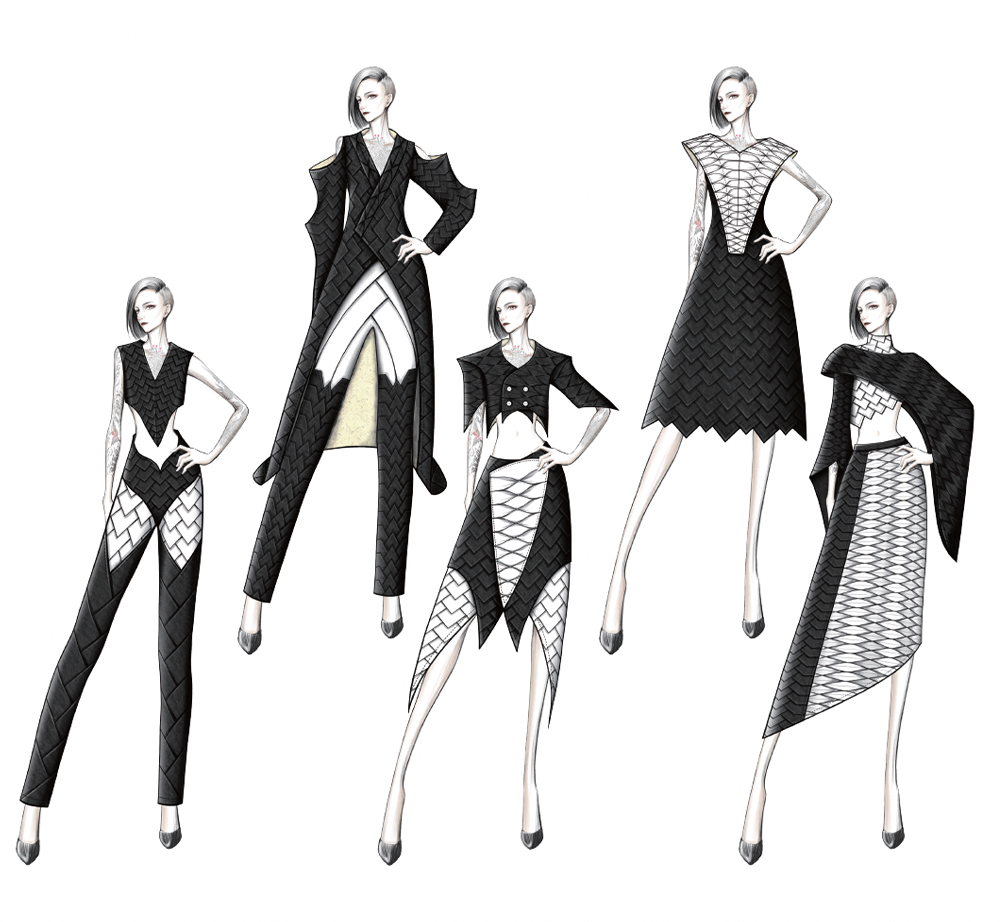
The hidden fact - by Chengyuan Wang

Designer: Chengyuan Wang; Stylist: Chengyuan Wang; Photographer: Nick Clements
One of your classmates was featured in your portfolio wearing one of your outfits. How did you collaborate with him?
Weihuai Zhang. Actually, the model wearing the other three looks was also a classmate of mine. They did not collaborate with me on the creative direction; they just modelled. It was Nick Clements, our tutor and photographer, who recommended that I cast Weihuaiso when I asked him for help.
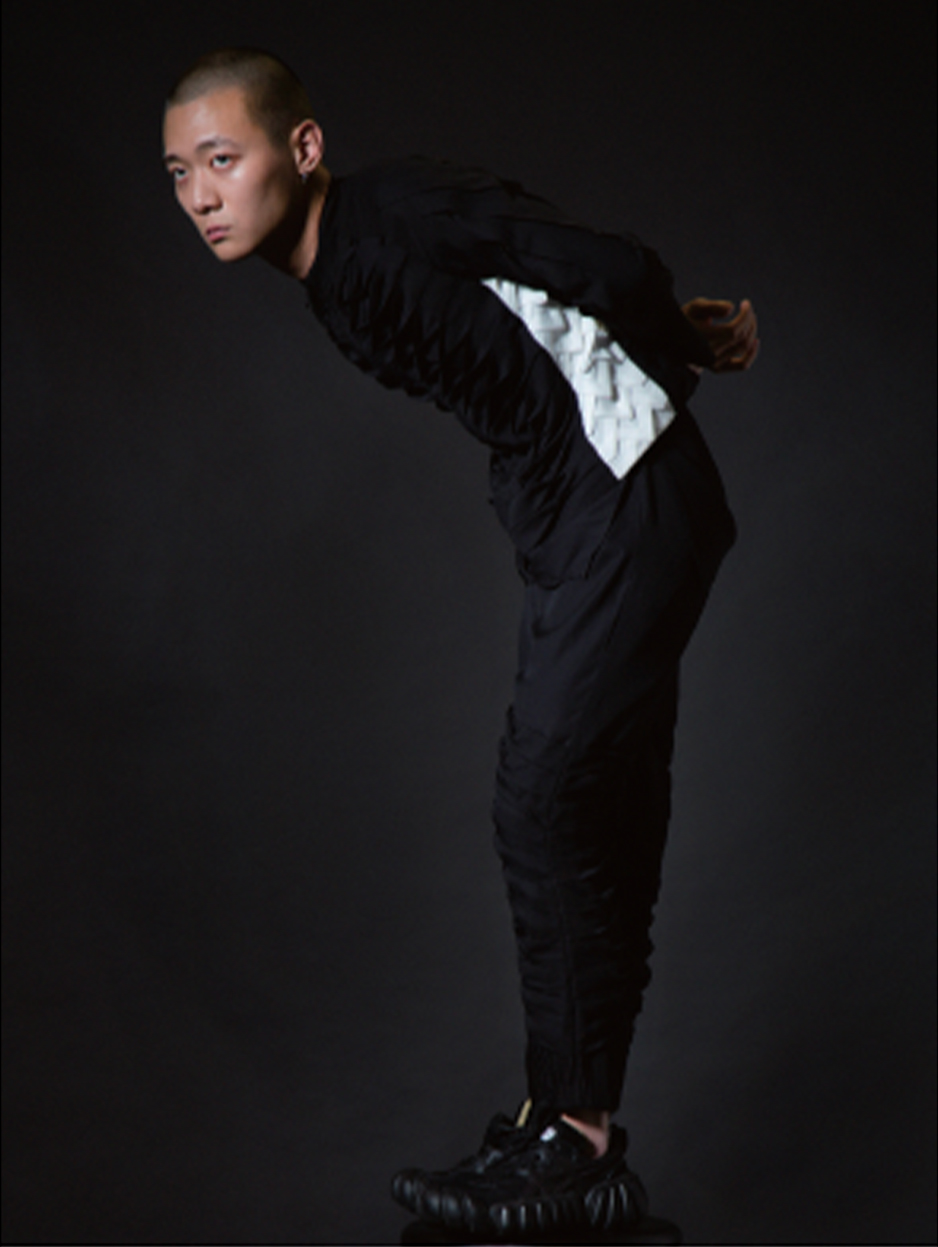
Designer: Chengyuan Wang; Stylist: Chengyuan Wang; Photographer: Nick Clements
The hidden fact - by Chengyuan Wang
What are your plans for your career in fashion design?
I hope to incorporate my previous texture designs more organically into commercial clothing. The calico dress was my first-term work. I created the texture in 2019 as part of my application for the Master’s in Fashion Design at Istituto Marangoni. At the same time, it can be developed into a zero-waste design, but it is still far from commercial use.

Calico dress in pattern cutting studio at Istituto Marangoni London by Chengyuan Wang

The hidden fact - by Chengyuan Wang
Silvia De Vecchi
University Librarian, London


